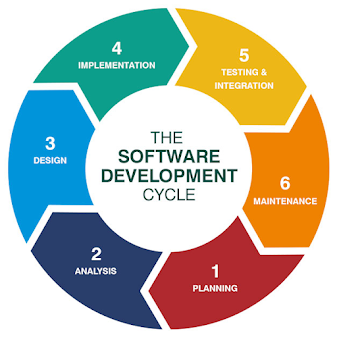Software Development Life Cycle
Software development life cycle( SDLC):
The software development life cycle (SDLC) is a method for designing, developing, and testing high-quality software.
SDLC seeks to provide high-quality software that meets or exceeds customer expectations and is delivered on time and on budget.
There are different phases in SDLC:
i. Planning:
The goal of planning is to define the problem's scope and suggest potential solutions. Resources, costs, time, and other factors should all be taken into account.
During this phase, the business analyst gathers requirements from the customer or client in accordance with the client's business requirements. The information received is then sent on to the development team.
Customer requirement specification, or CRS, is an example of a business specification.
ii. Analysis:
Define and document product requirements, then seek client approval. The SRS (Software Requirement Specifications) document is used to do this. During the project lifetime, the SRS document contains all of the product requirements that must be defined and developed. The project manager and business analyst are key players at this phase.
iii. Design:
We design the architecture of the software product to be built in high-level design, which is done by architects and senior developers.
Senior developers are responsible for low-level design. It explains how each product feature and component should function. Only the design, not the code, will be seen here. This phase produces a high-level and low-level document that serves as an input to the next phase.
iv. Implementation or development:
Developers of all levels, including senior, junior, and freshers, are active in this phase. This is the stage where we begin developing the software and writing the product's code. The source code document and created programme are the results of this phase.
v. Testing and Integration:
The tester receives the source code document as well as the generated software. Depending on the process outlined in the software testing lifecycle, testers test software manually or with automated technologies. In addition, it verifies that each software component is in good working order.
vi. Maintenance:
The product is delivered and deployed to the customer after successful testing. Deployment engineers or implementation engineers are in charge of the deployment.
Actual difficulties will arise as the consumer begins to use the product and will need to be resolved from time to time. The maintenance phase entails resolving faults discovered by clients. Because testers evaluate items in ways that differ from how customers use things, 100% testing is impossible.
Read the next blog in the series to discover all about the software development lifecycle models.

This site is excellent and so is how the subject matter was explained. I also like some of the comments too. Looking forward to your next post.
ReplyDeleteFull Body Harnesses